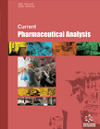
Full text loading...
Atypical peaks were observed in capillary electrophoresis with sodium dodecyl sulfate (CE-SDS) during the development of therapeutic monoclonal IgG4 antibodies (mAb-X). Based on the previous literature reports, the atypical peak may be caused by various factors such as post-translational modifications (PTMs), method-induced artifacts, sample degradation and sequence variants. Due to the high complexity structure of mAbs and the limitations of CE-SDS, acquiring comprehensive profiling of atypical peaks has historically been challenging.
Here we developed a strategy utilizing complementary analytical methods to identify the cause of atypical peak.
This strategy includes optimizing reduced CE-SDS method to evaluate artifacts induced by the analytical method, excluding potential glycation modifications, and utilizing Liquid Chromatograph Mass Spectrometer (LC-MS) to characterize mAb-X.
Our study demonstrates that the atypical peaks of mAb-X are a mixture of method-induced artifacts and variants in the C-terminal extension sequence of the light chain.
Strategy for complementary analytical methods tools helps to identify the cause of unknown species and plays a key role in product and process characterization.

Article metrics loading...

Full text loading...
References


Data & Media loading...
Supplements

